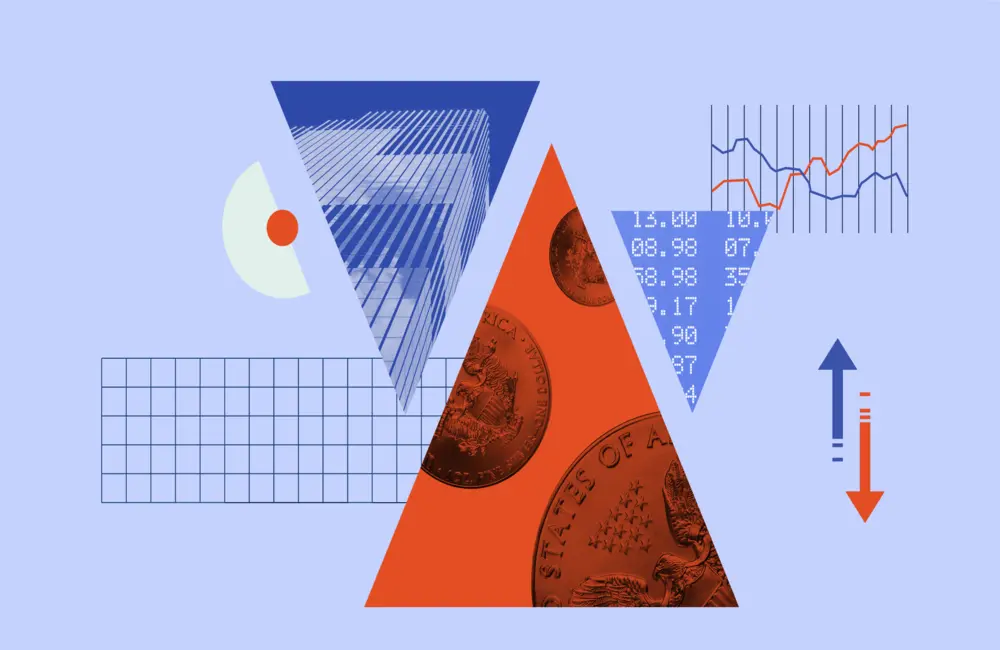ASX futures were down 99 points, or 1.4 per cent, at 7003 at 8.00 am on Tuesday, indicating yesterday’s sell-off will follow into the open.
The S&P 500 dropped 3.2 percent overnight, extending losses after logging its longest streak of weekly declines since 2011. Monday was the first time the index closed below the 4000 level since March 2021. The Nasdaq Composite plunged 4.3 percent, and the Dow Jones Industrial Average dropped 2 percent, closing at its lowest level since November 2020.
The market turbulence is a sign of uncertainty about whether central banks will be able to tame inflation without short-circuiting growth in a world where Chinese lockdowns are already piling pressure on backlogged supply chains and war in Eastern Europe is keeping a lid on commodity supplies.
“The market doesn’t know how much higher the Fed has to go to tame inflation, and we have the sense of a global slowdown,” said Sebastien Galy, a macro strategist at Nordea Asset Management. “There are a lot of negatives that are happening in the market.”
Chinese export growth dropped to its lowest level in two years on Monday, confirming fears that stringent Covid controls are weighing on activity in the world’s manufacturing hub.
Commodities fell in the wake of the weakness in the world’s largest raw material buyer. Brent crude oil dropped 5.7% to US$105.94 a barrel. Iron ore dropped 5.5% to US$131.35. Gold also got swept into the downdraft, down 0.3% to US$1852.90.
Locally, the S&P/ASX 200 finished down 1.2% to 7120.6, its weakest close since the middle of March.
Every sector except for healthcare was negative. The biggest decline came from property trusts, which fell a collective 4.2 per cent after warehouse group Goodman Group fell 7.0% to a near one-year low of $19.16.
The technology sector was among the worst performers, down 3.2%. Novonix sank 12.3% and was the worst performer in the benchmark index on Monday. Megaport and Life360 fell 8.6% and 6.3% respectively.
Fund manager Magellan retreated 8.4 per cent after revealing it had reached a deal to offload its stake in Mexican fast food chain Guzman Y Gomez for $140 million (a 36.3 percent premium to its entry price 16 months ago).
TPG Telecom rose 2.3% after it agreed to sell its mobile tower and rooftop infrastructure at an enterprise value of A$950 million.
Westpac on the other hand ended 3.2% higher after its 1H profit exceeded estimates. While CBA and NAB rose 0.3% and 0.2%, respectively, ANZ closed 2.7% down.
The mining sector fell 2.1% on a drop in the iron ore price.
In bond markets, the Australian 2 Year government bond yield was flat at 2.72% while the 10 Year continued to rise at 3.56%. Overseas, US Treasury 2 Years had yields at 2.59%, and 10 Year were 3.03%.
The Australian dollar was slightly lower at 69.48 US cents at 7.00 am on Tuesday, compared with its last close of 70.75. The Wall Street Journal Dollar Index, which measures the US dollar against 16 other currencies, climbed to 96.36.
Asia
Chinese stocks finished mixed, following data that showed China’s export growth declined to its lowest level in almost two years. The Shanghai Composite Index edged up 0.1% to 3004.14, the Shenzhen Composite Index gained 0.4% to 1865.92 and the ChiNext Price Index fell 0.8% to 2228.07. Oil-linked stocks, however, were higher after data showed China’s imports of crude oil in April rose nearly 7% on the year. Sinopec Oilfield Service advanced 1.1%, PetroChina up 0.9% and Yantai Jereh Oilfield Services Group gained 2.0%. Updates related to coronavirus will be closely monitored. “While the overall situation has improved, evidenced by daily new case count declining from peak, the disruption to overall economic activities has by no means abated,” OCBC analyst says in a note.
Hong Kong shares were closed for a public holiday.
Japanese stocks closed broadly lower amid ongoing worries about the higher costs of loans as well as raw materials. On the losing end, Nippon Paint Holdings fell 8.0% and food company Ajinomoto lost 7.0%. Japan Steel Works plunged 19% to the limit-down price of Y3,025 after it said data on inspections for some of its products had been improperly altered at the company’s unit. The Nikkei Stock Average dropped 2.5% to 26319.34. The yield on the 10-year Japanese government bond was up half a basis point at 0.245%. Earnings remained in focus.
Europe
On data up to October 2023, the pan-European Stoxx 600 index fell 2.9% to a two-month low of 417.46, following sharp falls in US equities on fears a third consecutive month of high inflation would depress economic growth.
“Talk of recession is appearing as markets really start to price in a succession of interest-rate hikes,” says Danni Hewson at AJ Bell. “If anyone was looking for a new week and new sentiment they were in for serious disappointment,” she says in a note.
The focus this week will be on US inflation data on Wednesday. Travel stocks are among the biggest decliners, along with tech, energy and mining stocks. Germany’s DAX closed 2.2 percent lower, France’s CAC 40 fell 2.8 percent.
London’s FTSE 100 fell 2.3% on Monday, as concern ahead of U.S. inflation data due on Wednesday and weak trade numbers from China weighed on the index.
“The determination by Chinese authorities to pursue a zero-Covid-19 policy is raising fears that it will have a chilling effect on the Chinese economy in the months ahead,” Michael Hewson, an analyst at CMC Markets, says in a note.
In addition, the threat of a big US Federal Reserve interest-rate hike and the ongoing war in Ukraine added "to heap the pressure on markets," AJ Bell investment director Russ Mould writes in a note.
North America
The market’s most punishing selloff in years showed no signs of easing on Monday, as US stock indexes skidded to another low for 2022 and other assets, including oil and bitcoin, fell.
A torrent of investor concerns has shaken markets this year. Inflation is at its most rapid pace in decades, potentially cutting into corporate profits and easing consumer spending. Economic growth is slowing. And the Federal Reserve is embarking on what analysts expect will be its most aggressive campaign of monetary policy tightening since the 1980s, something many investors fear could push the economy over the edge into recession.
Most do not see a recession around the corner. Our labour market continues to add jobs at a rapid clip. Wages are rising and the unemployment rate is near a 50-year low. But economists say the chances of a slowdown are rising and are now at the highest they have been in the past year, with those surveyed by The Wall Street Journal putting the probability of a recession at some point in the next 12 months at 28% up from 18% in January.
And the prospects for the global economy also are looking increasingly murkier, investors say. Supply chains already were tangled entering this year. Lockdowns in China intended to curb the spread of Covid-19 and Russia’s war against Ukraine have increased concern over how growth will fare elsewhere in the world. In the face of so much uncertainty, it’s no wonder that markets have been as volatile as they have been over the past few weeks, investors say.
“The market whiplash is just commencing,” said Andy Kapyrin, the co-chief investment officer at RegentAtlantic, a registered investment adviser in New Jersey and New York.
The S&P 500 dropped 3.2 percent, extending losses from yesterday after ending its longest streak of weekly declines since 2011. Monday was the first time the index finished below the 4000 level since March 2021. The Nasdaq Composite fell 4.3 percent, and the Dow Jones Industrial Average lost 2 percent, finishing at its lowest point since November 2020.
Later this week, investors will get another reading on inflation, when the Bureau of Labor Statistics publishes its consumer-price index. Economists are hoping data will reveal that inflation has decreased from the level of March, when it hit a four-decade high.
Any upside surprise could prompt new volatility across markets, analysts said. Investors had expressed relief last week when the Fed, which raised interest rates by half a percentage point, said it was not planning on bigger rate increases. That euphoria quickly turned to anxiety, however, as investors digested the potential message that the Fed may need to reconsider its plans further down the road if inflation doesn’t start to show signs of letting up sometime in the next few months.
The market doesn’t know how high the Fed needs to go to get inflation under control, and we have this sense of a global deceleration,” said Sebastien Galy, a macro strategist at Nordea Asset Management. “There’s a lot of negatives that are going on in the market.
Selling impacted most sectors of the S&P 500 on Monday. Shares of everything from manufacturers to banks to even energy producers, an otherwise bright spot this year, finished the day in the red.
Facebook parent Meta Platforms dropped $7.56, or 3.7 percent, to $196.21, while Amazon. Amazon.com fell $119.57, or 5.2 percent, to $2,175.78 and Apple dropped $5.22, or 3.3 percent, to $152.06. Technology stocks have had a particularly hefty hit from this year’s selling, because rising rates have made many investors hesitant to put money into parts of the market that seem pricey.
Industrial stocks were also tempered. Investors often see the group as an economic bellwether, because its profits tend to be especially sensitive to shifts in the growth outlook. Caterpillar dropped $8.36, or 3.9 percent, to $206.29 and Boeing tumbled $15.59, or 10.5 percent, to $133.31.
Even segments of the market that have remained relatively resilient this year fell back on Monday.
The S&P 500 energy sector dropped 8.3%, registering its largest one-day drop since June 2020.
Energy shares had surged the past few months with oil prices. But in recent days, some traders have started to fret that lockdowns aimed at containing the spread of Covid-19 in China will take a toll on global demand for the commodity. That has sucked some wind out of the rally. U.S. crude oil sank 6.1% to $103.09, marking its worst day since March.
Meanwhile, a selloff in cryptocurrencies continued to pick up speed, which sent the price of bitcoin plummeting to about $30,000. Bitcoin and other cryptocurrencies soared in recent years as near-zero interest rates encouraged investors to hunt for riskier markets that might pay off more.
The surge in interest rates this year has put an end to that rally. Now investors say they are being made to reconsider the charms of many trades that had thrived in a low-rate, low-growth backdrop.
The yield on the benchmark 10-year Treasury note fell to 3.080% on Monday from 3.124% on Friday. The 10-year yield, which increases as bond prices decline, has jumped by nearly 1.6 percentage points since the end of 2021.























